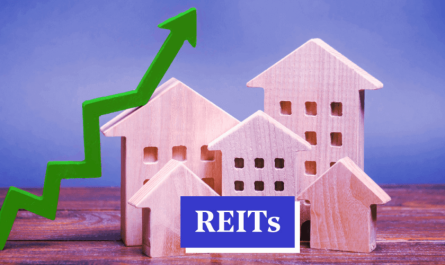Real estate investing is one of the most effective ways to generate passive income and build wealth over time. If you’re a beginner looking to get started, you’re in the right place. This guide will break down the essentials of real estate investing, from types of properties to financing options and strategies for maximising your returns.
Why Invest in Real Estate for Passive Income?
Real estate offers numerous advantages as an investment vehicle, including potential appreciation, steady cash flow, and tax benefits. Unlike stocks, real estate investments allow you to build a tangible asset that has the potential to generate income even during economic downturns. With the right approach, you can turn real estate into a significant source of passive income.
1. Understand the Different Types of Real Estate Investments
There are various types of real estate investments to consider, and each has its pros and cons. Here are some common options for beginners:
- Residential Properties: Single-family homes, duplexes, or small apartment buildings are great for those new to real estate investing. They’re relatively easier to manage and attract a broad range of renters.
- Commercial Properties: Investing in office buildings, retail spaces, or industrial facilities can yield higher returns, but it also requires more capital and management expertise.
- REITs (Real Estate Investment Trusts): If you’re looking to invest in real estate without owning physical property, REITs allow you to buy shares in real estate portfolios. These are perfect for beginners who want exposure without the hands-on management.
- Vacation Rentals: Short-term rental properties on platforms like Airbnb can generate substantial income, especially in popular tourist areas.
Tip: Choose an investment type that aligns with your risk tolerance, budget, and time commitment.
2. Assess Your Finances and Secure Funding
Before investing in real estate, it’s essential to understand your financial standing and determine how much capital you have to invest. There are various financing options available to help fund your investment:
- Traditional Mortgages: For first-time investors, traditional mortgages are the most common financing option. Banks offer competitive rates if you have a good credit score and stable income.
- FHA Loans: If you’re buying a multi-family property and plan to live in one unit, an FHA loan allows for lower down payments and more flexible credit requirements.
- Private Money Lenders and Hard Money Loans: If you don’t qualify for traditional financing, consider private or hard money lenders. These loans have higher interest rates but can provide quick access to capital.
- Real Estate Crowdfunding: For those with limited capital, real estate crowdfunding platforms pool funds from multiple investors to finance larger projects.
Tip: Explore various funding sources and consult with a financial advisor to determine which option best suits your investment goals.
3. Location, Location, Location
The location of your property is critical in determining its rental potential and appreciation. Research different neighbourhoods and cities, and consider the following factors:
- Job Market: Areas with growing employment opportunities attract more renters and often experience faster property appreciation.
- Local Amenities: Proximity to schools, shopping centres, parks, and public transportation can make your property more attractive to potential tenants.
- Safety: Look for areas with low crime rates. Properties in safe neighbourhoods are more desirable and tend to maintain their value.
- Future Development: Research upcoming developments in the area, as new infrastructure can positively impact property values.
Tip: Use online tools like Zillow, Redfin, or Realtor.com to compare property values and get a feel for the local market.
4. Calculate Expected Cash Flow and ROI
To ensure a property will generate positive cash flow, calculate your expected rental income and expenses. Key figures to consider include:
- Rental Income: Research similar properties in the area to estimate how much rent you can charge.
- Operating Expenses: Consider property taxes, insurance, maintenance, and property management fees.
- Financing Costs: If you’re using a mortgage, factor in monthly payments, interest, and any closing costs.
A good rule of thumb for rental properties is the 1% rule, which suggests that your monthly rental income should be at least 1% of the purchase price. Additionally, calculate your Return on Investment (ROI) by dividing your annual nett income by the total cost of the property.
Tip: Use online real estate calculators to simplify cash flow and ROI projections.
5. Consider Hiring a Property Manager
Managing a rental property can be time-consuming, especially if you’re investing in multiple properties or live far from your investment. Hiring a property manager can alleviate the stress of tenant screening, maintenance, and rent collection.
While property managers typically charge a percentage of the rental income (usually around 8–12%), they can ensure your property remains well-maintained and profitable.
Tip: Evaluate the cost of hiring a manager versus self-managing based on the size and location of your property.
6. Leverage Tax Benefits
One of the advantages of real estate investing is the array of tax deductions available. Deductions for expenses like mortgage interest, property taxes, insurance, and maintenance can reduce your taxable income.
Depreciation is another tax benefit that allows you to spread out the cost of the property over several years, even if its value is increasing.
Tip: Work with a tax professional who understands real estate to help you maximise your deductions.
7. Stay Educated and Network with Other Investors
Real estate is a constantly evolving field, and staying informed can give you a competitive edge. Consider joining real estate investing groups, attending seminars, and connecting with other investors for advice and support.
Why It Matters: Networking can open doors to off-market deals, partnerships, and valuable insights from experienced investors.
Conclusion
Investing in real estate for passive income can be a rewarding venture that provides financial freedom and wealth-building opportunities. By following this beginner’s guide, you’ll be well on your way to making informed investment decisions that can yield consistent returns.
Remember, the key to success is research, planning, and patience. Start small, learn as you go, and soon you’ll be able to build a real estate portfolio that generates passive income for years to come.







